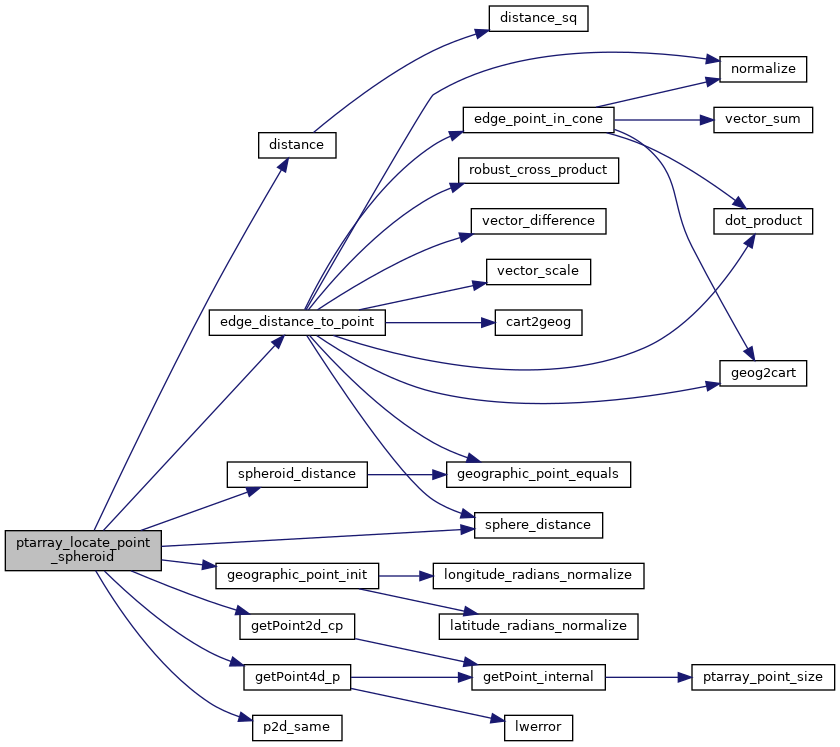◆ ptarray_locate_point_spheroid()
| double ptarray_locate_point_spheroid | ( | const POINTARRAY * | pa, |
| const POINT4D * | p4d, | ||
| const SPHEROID * | s, | ||
| double | tolerance, | ||
| double * | mindistout, | ||
| POINT4D * | proj4d | ||
| ) |
Locate a point along the point array defining a geographic line.
Definition at line 361 of file lwgeodetic_measures.c.
442 /* On a spheroid and near the tolerance? Confirm that we are *actually* closer than tolerance */
int getPoint4d_p(const POINTARRAY *pa, uint32_t n, POINT4D *point)
Definition: lwgeom_api.c:125
void geographic_point_init(double lon, double lat, GEOGRAPHIC_POINT *g)
Initialize a geographic point.
Definition: lwgeodetic.c:180
double sphere_distance(const GEOGRAPHIC_POINT *s, const GEOGRAPHIC_POINT *e)
Given two points on a unit sphere, calculate their distance apart in radians.
Definition: lwgeodetic.c:948
double edge_distance_to_point(const GEOGRAPHIC_EDGE *e, const GEOGRAPHIC_POINT *gp, GEOGRAPHIC_POINT *closest)
Definition: lwgeodetic.c:1222
double spheroid_distance(const GEOGRAPHIC_POINT *a, const GEOGRAPHIC_POINT *b, const SPHEROID *spheroid)
Computes the shortest distance along the surface of the spheroid between two points,...
Definition: lwspheroid.c:79
static const POINT2D * getPoint2d_cp(const POINTARRAY *pa, uint32_t n)
Returns a POINT2D pointer into the POINTARRAY serialized_ptlist, suitable for reading from.
Definition: lwinline.h:101
Definition: liblwgeom.h:389
Definition: liblwgeom.h:413
References distance(), edge_distance_to_point(), GEOGRAPHIC_EDGE::end, POINTARRAY::flags, FLAGS_GET_Z, geographic_point_init(), getPoint2d_cp(), getPoint4d_p(), GEOGRAPHIC_POINT::lat, GEOGRAPHIC_POINT::lon, POINT4D::m, POINTARRAY::npoints, p2d_same(), rad2deg, s, sphere_distance(), spheroid_distance(), GEOGRAPHIC_EDGE::start, POINT2D::x, POINT4D::x, POINT2D::y, POINT4D::y, and POINT4D::z.
Referenced by geography_line_locate_point().
Here is the call graph for this function:

Here is the caller graph for this function:
